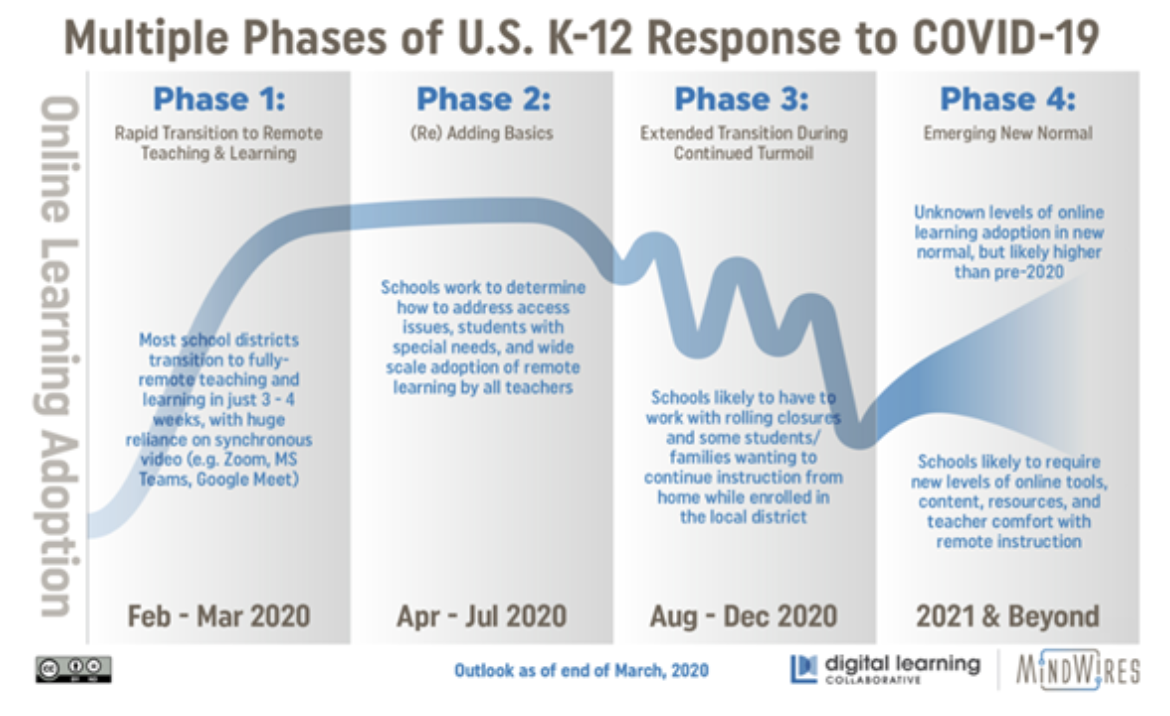Online Learning: Here To Stay or Gone Tomorrow? (Part 1 of 4)By John Jacobs, Executive Director of the Wisconsin eSchool Network Partner of the Wisconsin Digital Learning Collaborative Some say the initial distance learning efforts began back in the 1970s as pioneers in the higher education space began to push the boundary related to the time and place of learning. Fast forward to the early 2000s and disruptive innovators began to offer online learning at the primary and secondary levels across our K-12 education sector with minimal mainstream adoption. Fast forward another 15 years and steady adoption of online learning slowly started to become a staple of many district offerings. Fast forward to 2020 and our entire education system was flipped upside down with a global pandemic. Here we are today as educational leaders asking the question, “Is online learning here to stay or will it be gone tomorrow?” The pandemic forced our educational system to rethink how online learning will or will not be part of our system in the future. Below is a graphic from a blog written by an industry veteran John Watson, CEO of Evergreen Education as part of the Digital Learning Collaborative from July 29, 2021 titled, “Districts are launching online/hybrid programs in record numbers.” In this blog, John speaks to the increased growth of online learning offerings deployed by districts as a result of the pandemic in four phases: 1) Rapid Transition to Remote Learning, 2) Adding Basics, 3) Extended Transition, and 4) Emerging New Normal.
Right here in Wisconsin we see continued expansion of online programs and virtual charters operated by districts. What does this mean for the future and where do we go next? Each phase of this chart provides a glimpse into the daily lives of educational leaders across the country faced with the rapid iterative process related to online learning offerings. Phase 4 presents us with the question, “Where do we go beyond 2021?” District leaders are generally in one of four categories related to the implementation of online learning as we look to the future.
For those who fall in category two, three, and four we find that leaders have one or more of the following strategies behind their “why” online learning will be a staple within their district:
Now more than ever, educators across Wisconsin have an opportunity to lean on each other as we strive to understand how online learning supports learning into the future. Educational leaders have and continue to realize online learning requires purposeful planning, budget, time, staff, and a commitment to quality. As we continue to walk in the trenches of the pandemic, let's commit to planning for quality as learning models continue to meet the needs of students to learn anywhere, any place, and any time. We hope you join us throughout the year in our four-part series looking at the varying aspects of Planning for Quality Online Learning. The following three resources should be leveraged as you commit to quality online learning planning, implementation, or continuous improvement.
Through a series of four articles, this year, we will highlight district examples that prioritize online learning through the lens of student choice, student readiness, and student retention all with a commitment to quality and continuous improvement. The power of all of us, all in one place. Online learning together.
Read more at:
|

